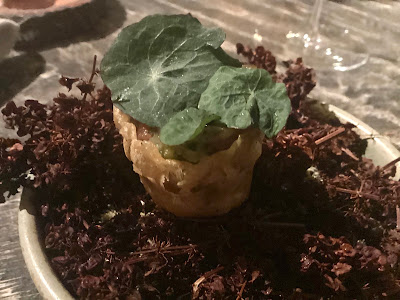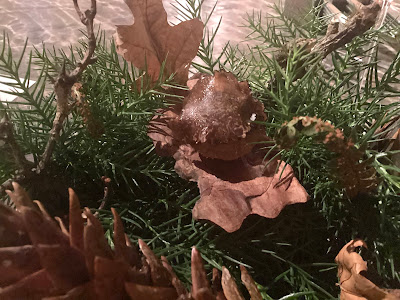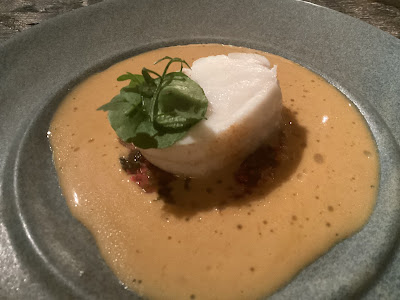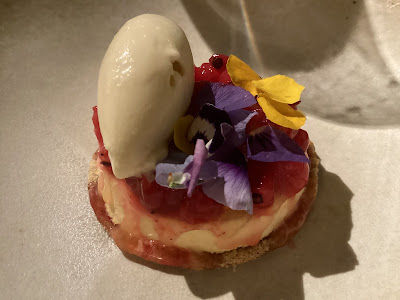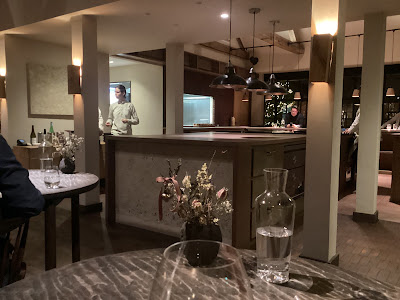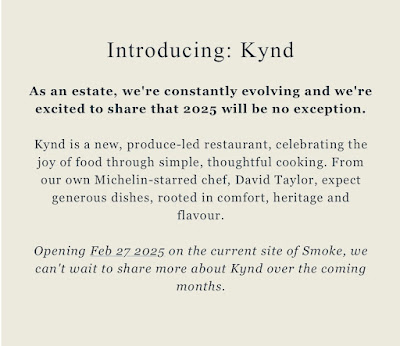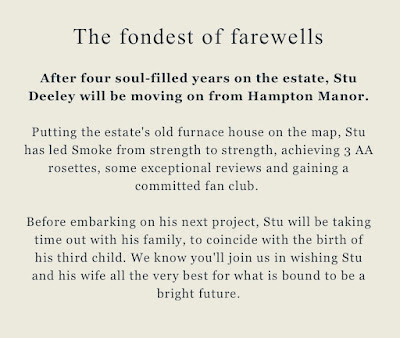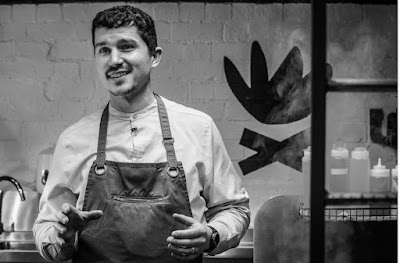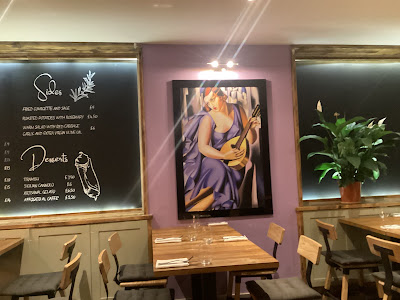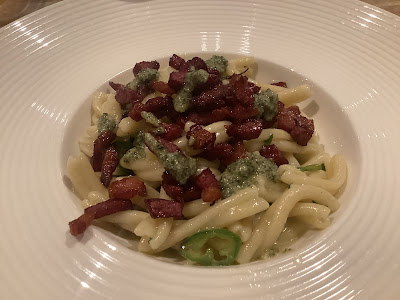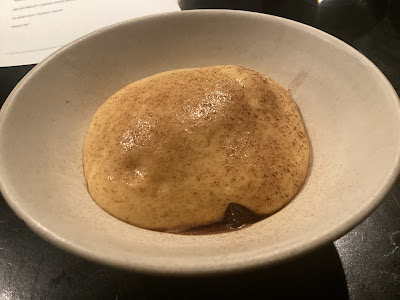It had been over a year since I had last visited David Taylor’s Grace and Savour and I had forgotten my way through the dark from Hampton in Arden railway station to Hampton Manor and so it took a little wandering around in the near-pitch blackness to eventually almost literally stumble on the brightly lit entrance to this immaculate restaurant. But I was glad to be there and was welcomed kindly. The price of a single gin and tonic - £18 - was a little less welcoming but fortunately I had ordered it without looking at the price and so I did not experience indigestion before I sat down to eat. Though if I had seen the price I might not have ordered a second. Still, it soothed me after the journey from Birmingham which is not far away in theory but longer when using public transport with all its many failures and pitfalls.


I felt relaxed and content - remember, I had not seen that I owed £36 for two single gins and tonics - and I was delighted with all the food that was presented to me - 14 courses - as the evening moved on.



Still, let’s put gin behind us and proceed with the food. The first course took the form of a bowl of warming and delicious broth made from roasted venison bones with salsify garnished with pleasing crispy deep fried Savoy cabbage shreds alongside a lovely juniper milk bun made on the estate and fermented butter. This reminded me of my first visit to Grace and Savour, soon after it first opened, on a cold, black night, when Chef Director David Taylor himself greeted me and served me a comforting bowl of broth, as they might have done in centuries past when travellers arrived at a post inn after a long day in a stage coach, and immediately ringing the note of sincere welcome and the promise of the repast that was to be served. Then a fine tartlet, a deep cerise in colour and yet autumnal in appearance - this stemming from the lovely biodynamic yogurt fused with honey and Chapel Organics north Berwick) beetroot. Delicious.


Next an arresting autumnal visual experience - thin slices of Warwickshire Jerusalem artichokes paired with apple - a fine coupling - presented on a bed of dried artichoke stems. Then, a fine wagyu tartar croustade, the meat originating at Dunwood Farm near Stoke on Trent, with black garlic, the sweet tang of pickled elderflower along with peppery nasturtium leaves.
The remarkable presentations continued with a dish of field mushroom, buckwheat and Welsh black truffle. I was particularly pleased with how very much I enjoyed the next dish of pumpkin and apple with the very agreeable texture of slices of Kent walnut. This may well have been my favourite dish from out of all the very fine dishes.
All the time, the service was very good, perfectly judged, with the food being delivered to the table, sometimes by the front of house staff, sometimes by the chefs themselves and when the cooks were in the very open kitchen, as I have remarked in a previous Blog, there was the sight of a well-oiled culinary machine operating in unison to prepare and plate up the food; the smartly white jacketed younger chefs all gathered around David Taylor like medical students around their professor, observing and learning and assisting as he goes about the various stages of the complex operation. A memorable sight.

The dishes continued to come along. A bread course - perhaps more to showcase the bread made on the estate rather than as a vital part of the dinner but - grained sourdough and butter infused with the grain used to produce the bread. The bread was nicely textured and tasty and moved the diner on to a dish of finely chopped razor clams, cobnuts, a profusion of Cornish sea herbs and an aptly maritime clear broth punchy with mussel, sweet with apple and finished off with sea pepper, served like a still sea.



Accurately cooked monkfish - very accurately - prepared with a bisque-like sauce derived from preserved tomatoes, peaso (an improbable-sounding somewhat floral miso-like condiment produced from organic split peas, rice Kori and elderflower, less sweet and salty than miso) and crab, was the nextdish to bring great pleasure and it lead up to some gorgeously tender and beautifully flavoured fallow venison loin which had been gently smoked over juniper as well as venison belly which was rather dry, I thought. The venison was accompanied by celeriac, elderberry and crispy deep fried reindeer moss and a spectacularly unctious blackberry sauce.
Autumn fruit made up the focus of the desserts - the first based on blackcurrants from the Manor’s garden with a buttermilk infused with the wood of the blackcurrant along with blackcurrant oil. Then the distinctive sharpness of homegrown redcurrants necessarily countering the sweetness of a local honey parfait and soothed by a brown butter ice cream.
The evening was almost over. The kitchen was emptying of the dramatis personae. There was coffee to drink to see me home and a final dish of choux pastry, which did not really have the right texture for me, filled with a preserved fermented plum cream nestling inside it (the photo shows it half eaten, I’m afraid).
This, as you would expect, was a very fine meal. I shall be interested to see if Michelin wheels out a second star at the start of 2025. I think it will.
Rating:- 🌞🌞🌞.
27/November 2025.
As a footnote, the following morning it was announced that Stu Deeley was to leave his role at the end of os 2024 as Executive Chef at Hampton Manor in the hotel’s other Michelin-listed restaurant Smoke which is to close and be reopened in February 2025 under the guidance of David Taylor. The new restaurant will be named Kynd.









